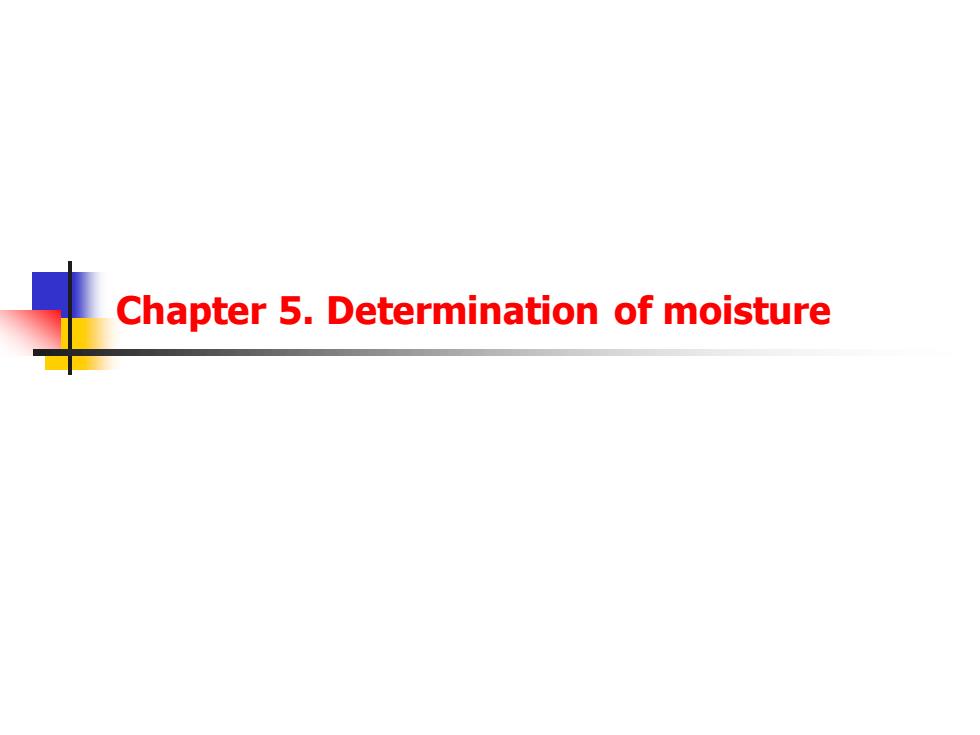
Chapter 5. Determination of moisture
Chapter 5. Determination of moisture
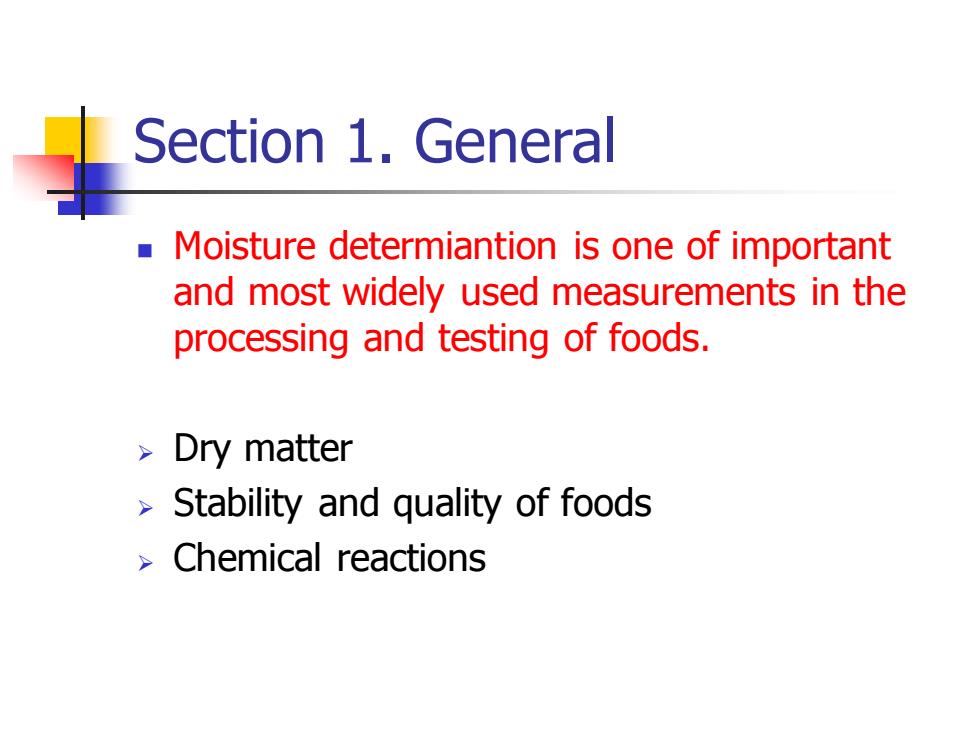
Section 1. General ◼ Moisture determiantion is one of important and most widely used measurements in the processing and testing of foods. ➢ Dry matter ➢ Stability and quality of foods ➢ Chemical reactions
Section 1. General ◼ Moisture determiantion is one of important and most widely used measurements in the processing and testing of foods. ➢ Dry matter ➢ Stability and quality of foods ➢ Chemical reactions
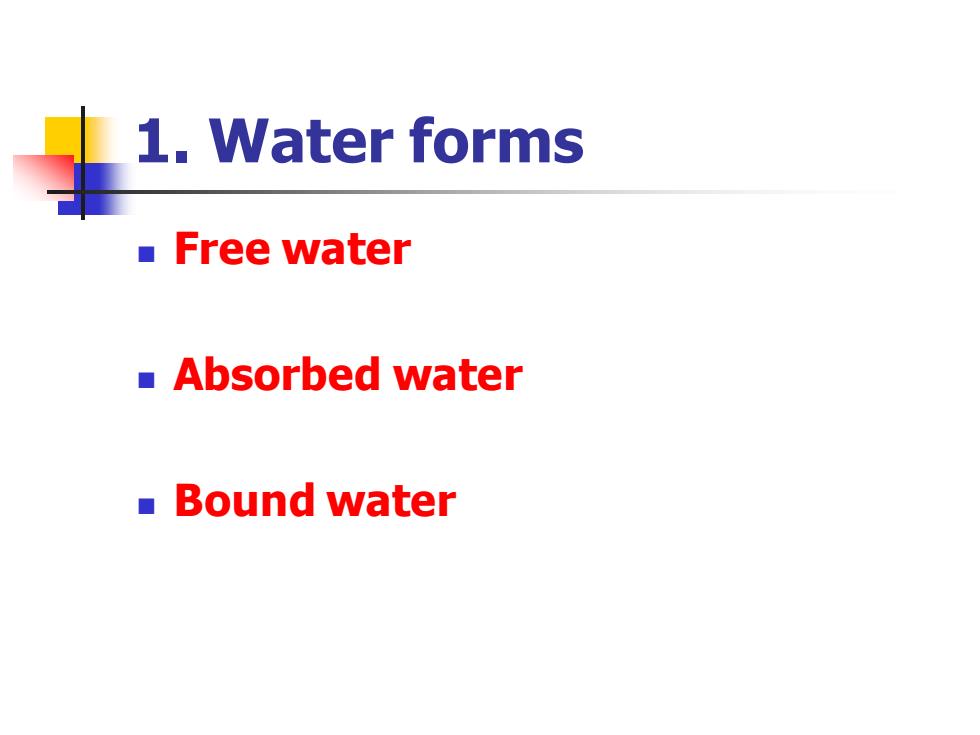
1. Water forms ◼ Free water ◼ Absorbed water ◼ Bound water
1. Water forms ◼ Free water ◼ Absorbed water ◼ Bound water
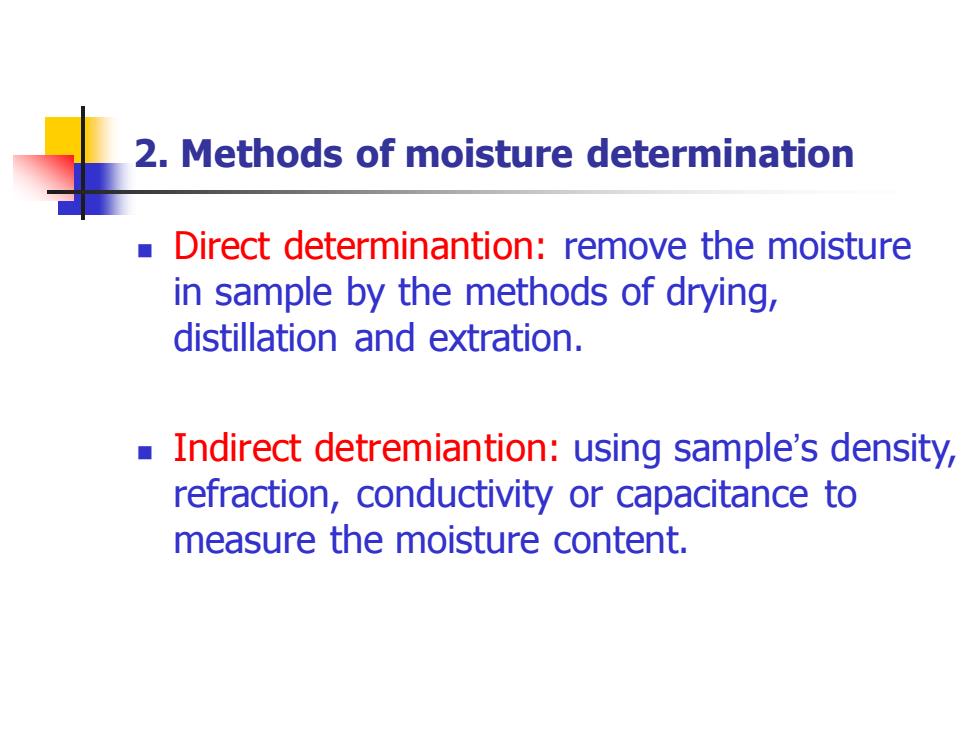
2. Methods of moisture determination ◼ Direct determinantion: remove the moisture in sample by the methods of drying, distillation and extration. ◼ Indirect detremiantion: using sample’s density, refraction, conductivity or capacitance to measure the moisture content
2. Methods of moisture determination ◼ Direct determinantion: remove the moisture in sample by the methods of drying, distillation and extration. ◼ Indirect detremiantion: using sample’s density, refraction, conductivity or capacitance to measure the moisture content
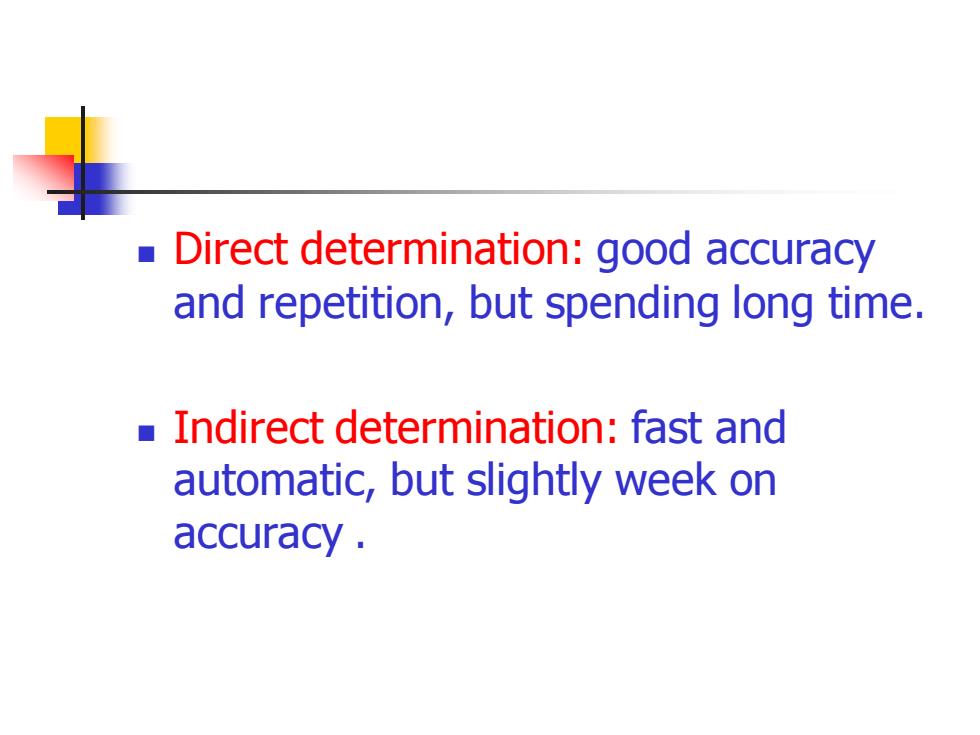
◼ Direct determination: good accuracy and repetition, but spending long time. ◼ Indirect determination: fast and automatic, but slightly week on accuracy
◼ Direct determination: good accuracy and repetition, but spending long time. ◼ Indirect determination: fast and automatic, but slightly week on accuracy
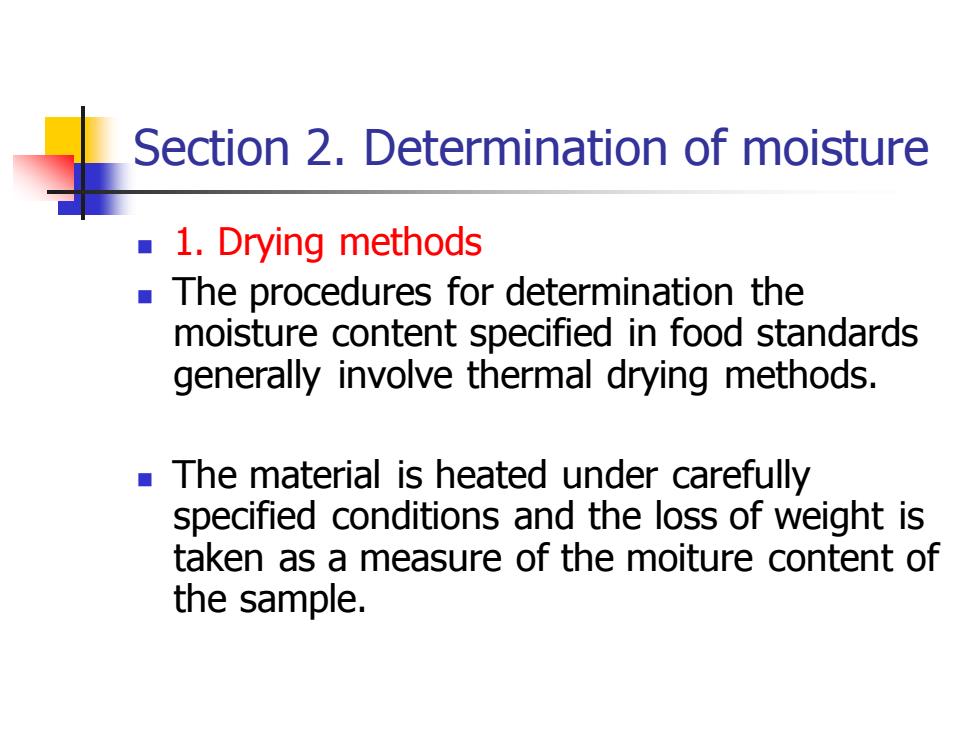
Section 2. Determination of moisture ◼ 1. Drying methods ◼ The procedures for determination the moisture content specified in food standards generally involve thermal drying methods. ◼ The material is heated under carefully specified conditions and the loss of weight is taken as a measure of the moiture content of the sample
Section 2. Determination of moisture ◼ 1. Drying methods ◼ The procedures for determination the moisture content specified in food standards generally involve thermal drying methods. ◼ The material is heated under carefully specified conditions and the loss of weight is taken as a measure of the moiture content of the sample
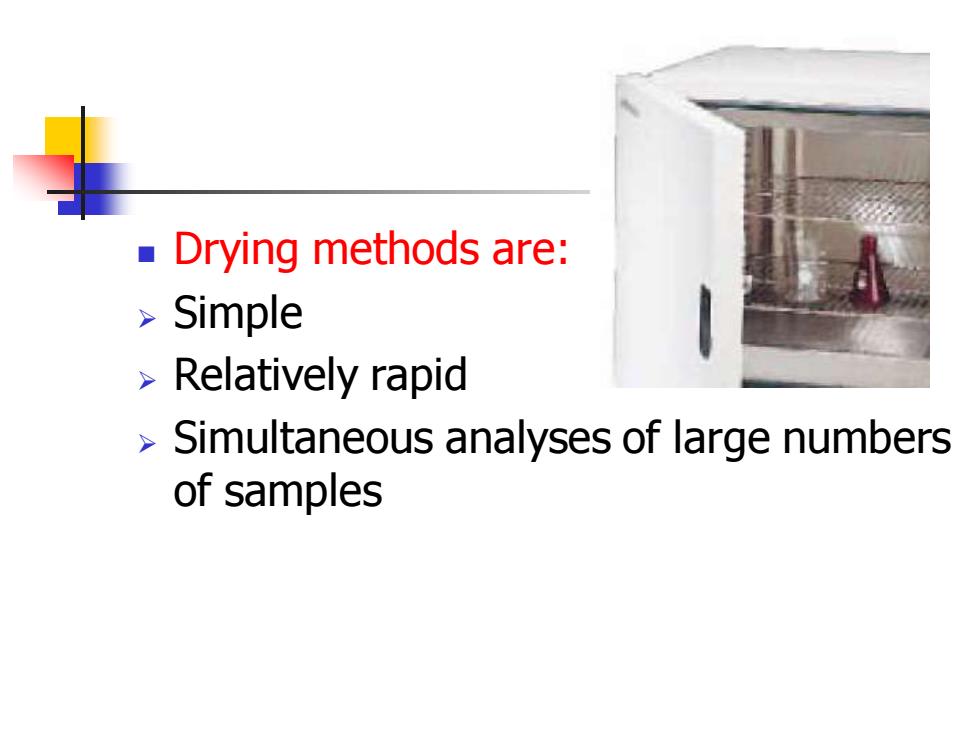
◼ Drying methods are: ➢ Simple ➢ Relatively rapid ➢ Simultaneous analyses of large numbers of samples
◼ Drying methods are: ➢ Simple ➢ Relatively rapid ➢ Simultaneous analyses of large numbers of samples
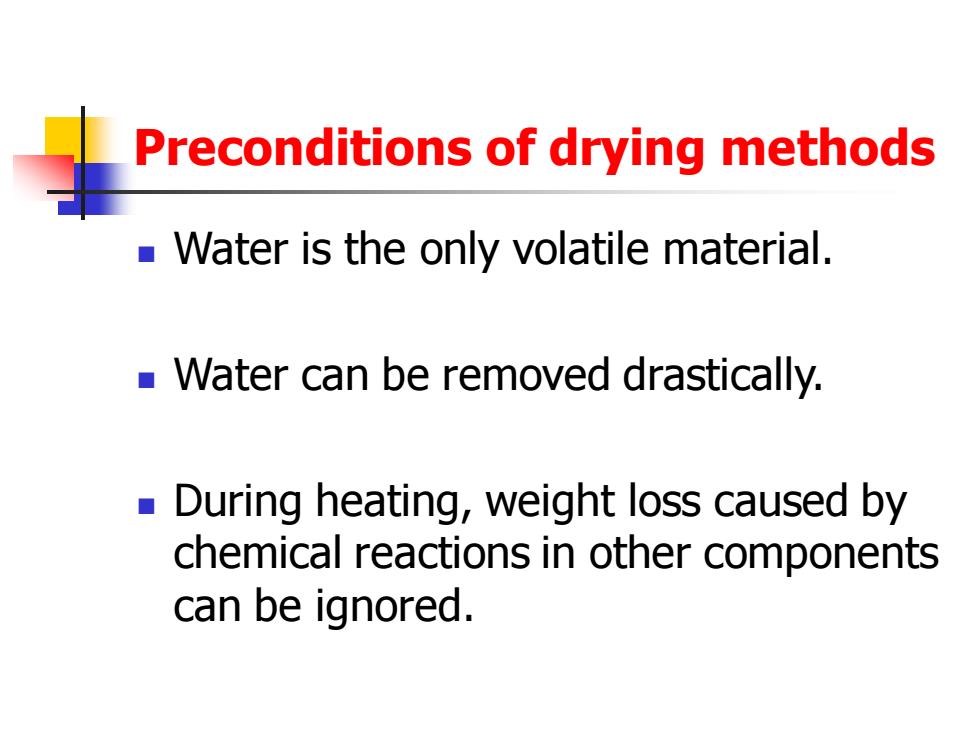
Preconditions of drying methods ◼ Water is the only volatile material. ◼ Water can be removed drastically. ◼ During heating, weight loss caused by chemical reactions in other components can be ignored
Preconditions of drying methods ◼ Water is the only volatile material. ◼ Water can be removed drastically. ◼ During heating, weight loss caused by chemical reactions in other components can be ignored

1.1 Directly drying method ◼ Principle: In certain tempatature (95-105℃) and pressure, samples are heated in oven and then water in samples is vaporized. The loss of weight is moisture content of samples. ◼ Applying range: There is no other volatile materials besides water. furthermore, the sample is stable when heating
1.1 Directly drying method ◼ Principle: In certain tempatature (95-105℃) and pressure, samples are heated in oven and then water in samples is vaporized. The loss of weight is moisture content of samples. ◼ Applying range: There is no other volatile materials besides water. furthermore, the sample is stable when heating
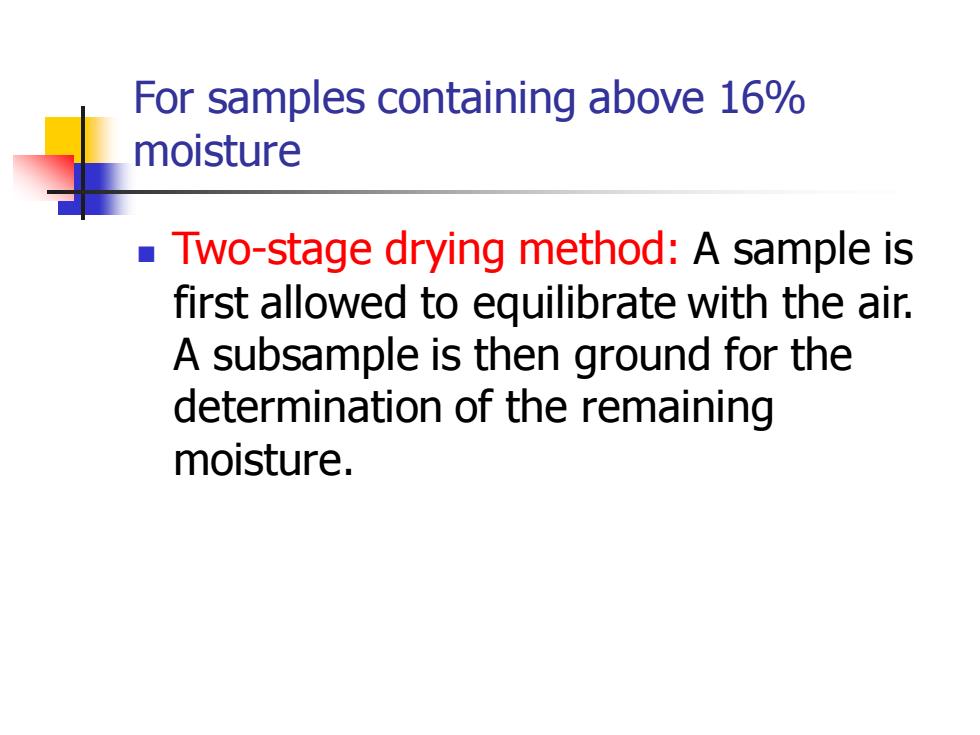
For samples containing above 16% moisture ◼ Two-stage drying method: A sample is first allowed to equilibrate with the air. A subsample is then ground for the determination of the remaining moisture
For samples containing above 16% moisture ◼ Two-stage drying method: A sample is first allowed to equilibrate with the air. A subsample is then ground for the determination of the remaining moisture